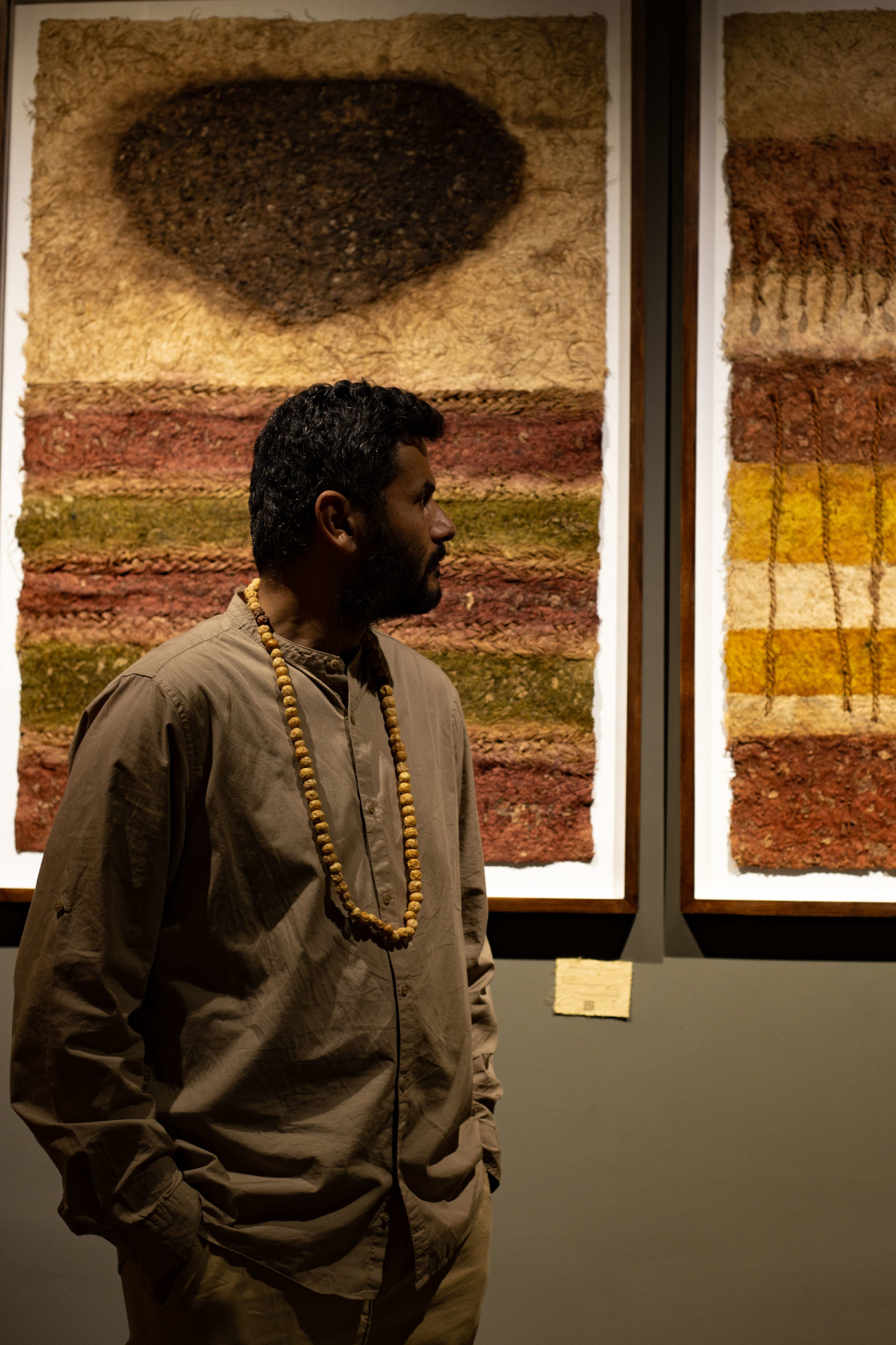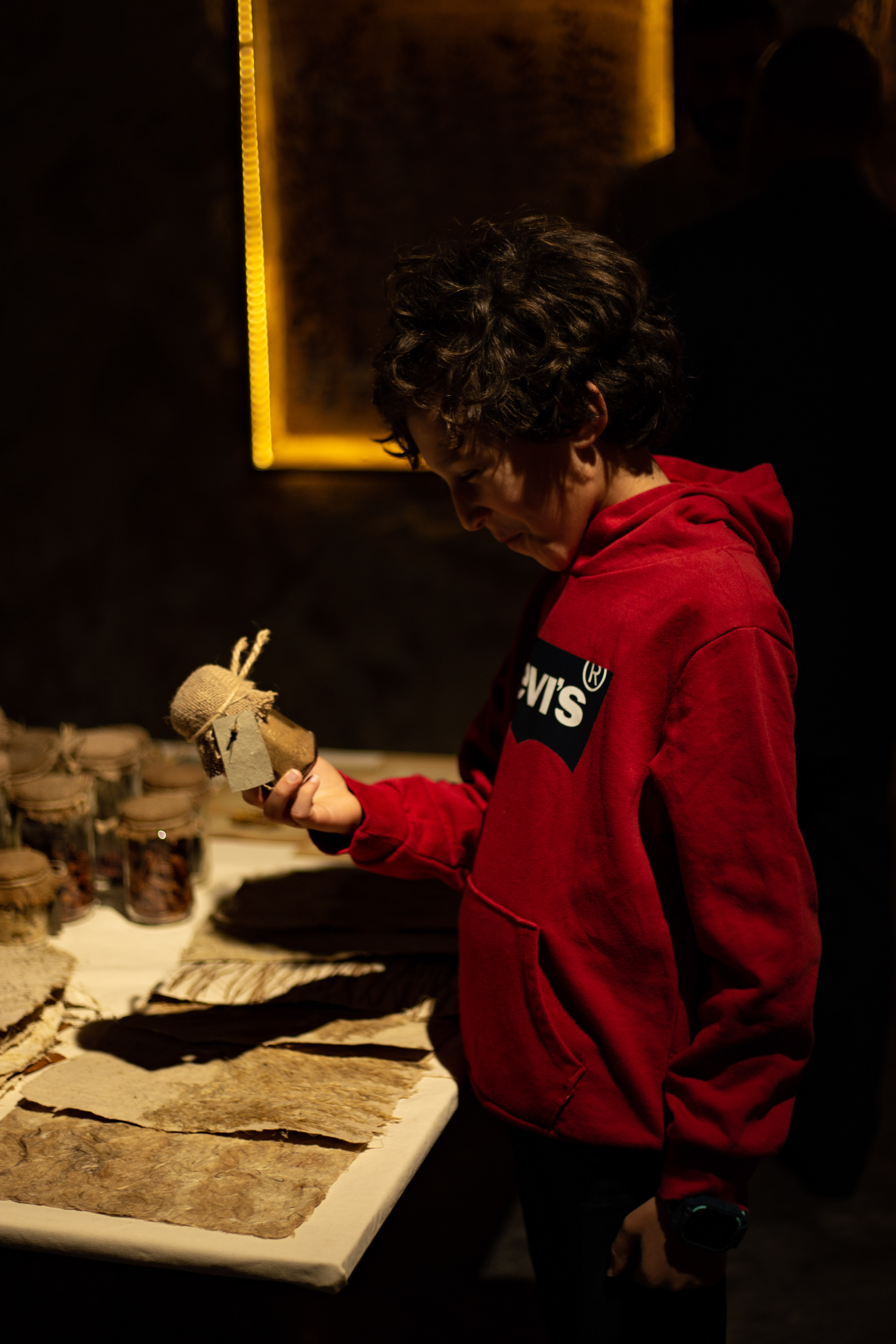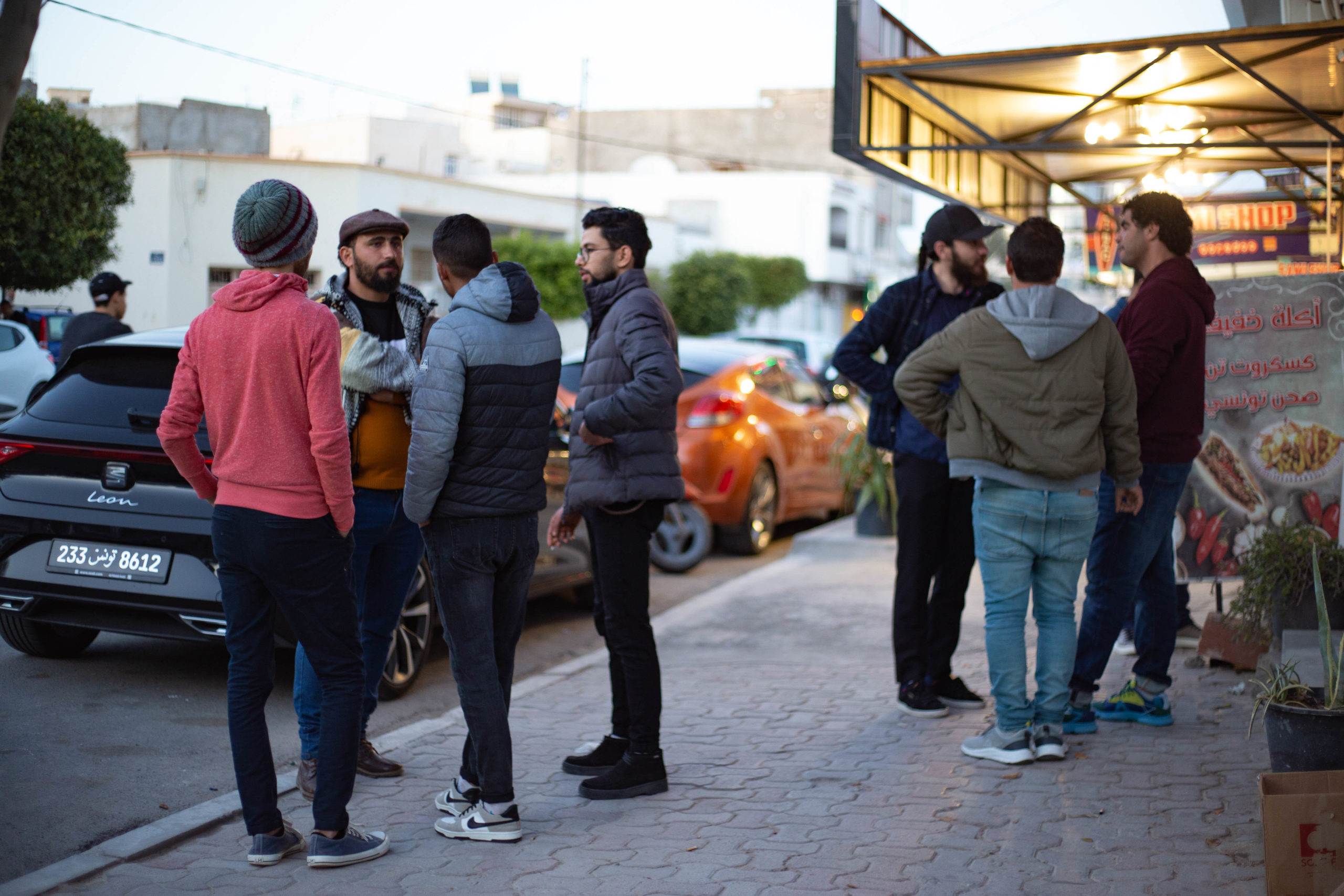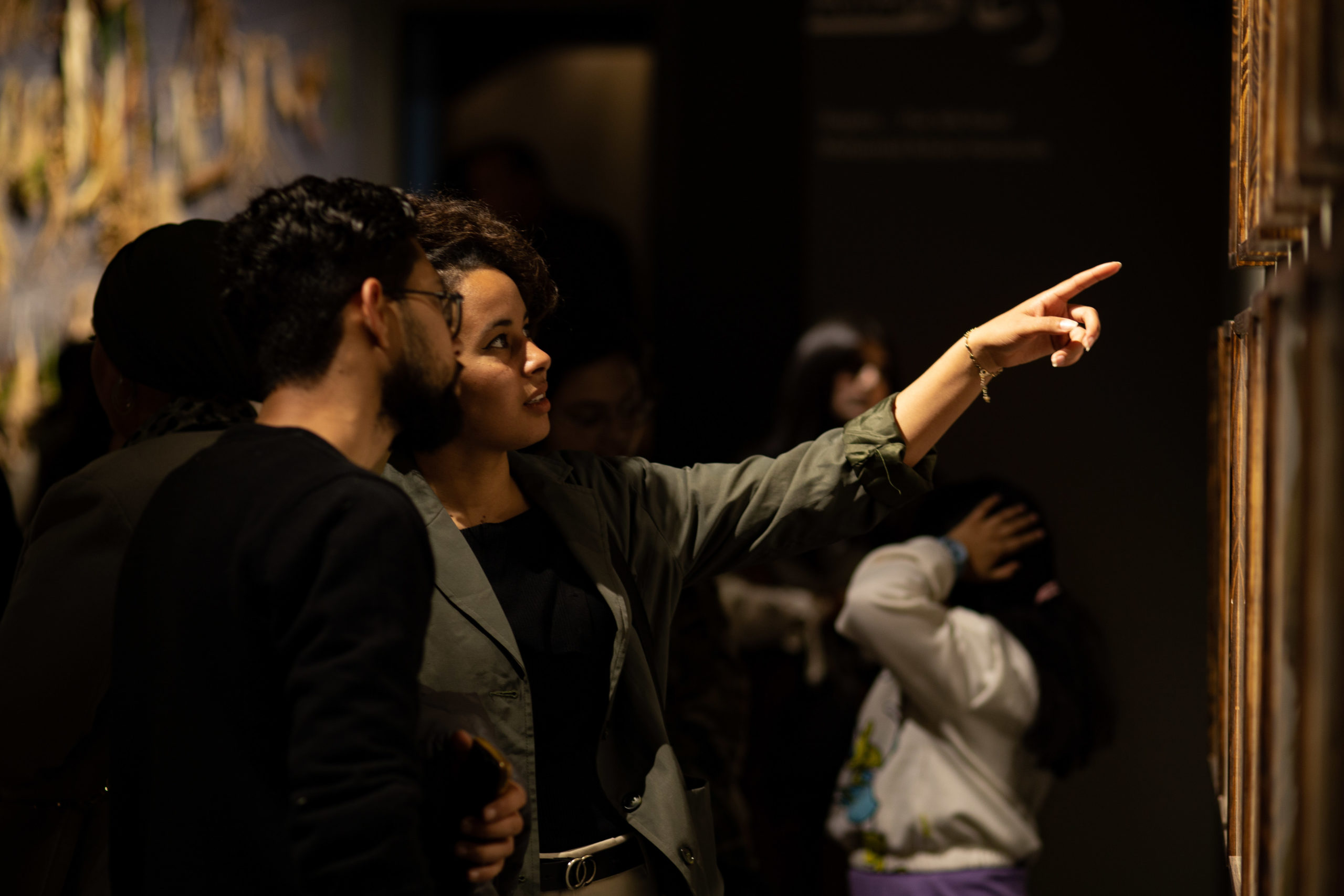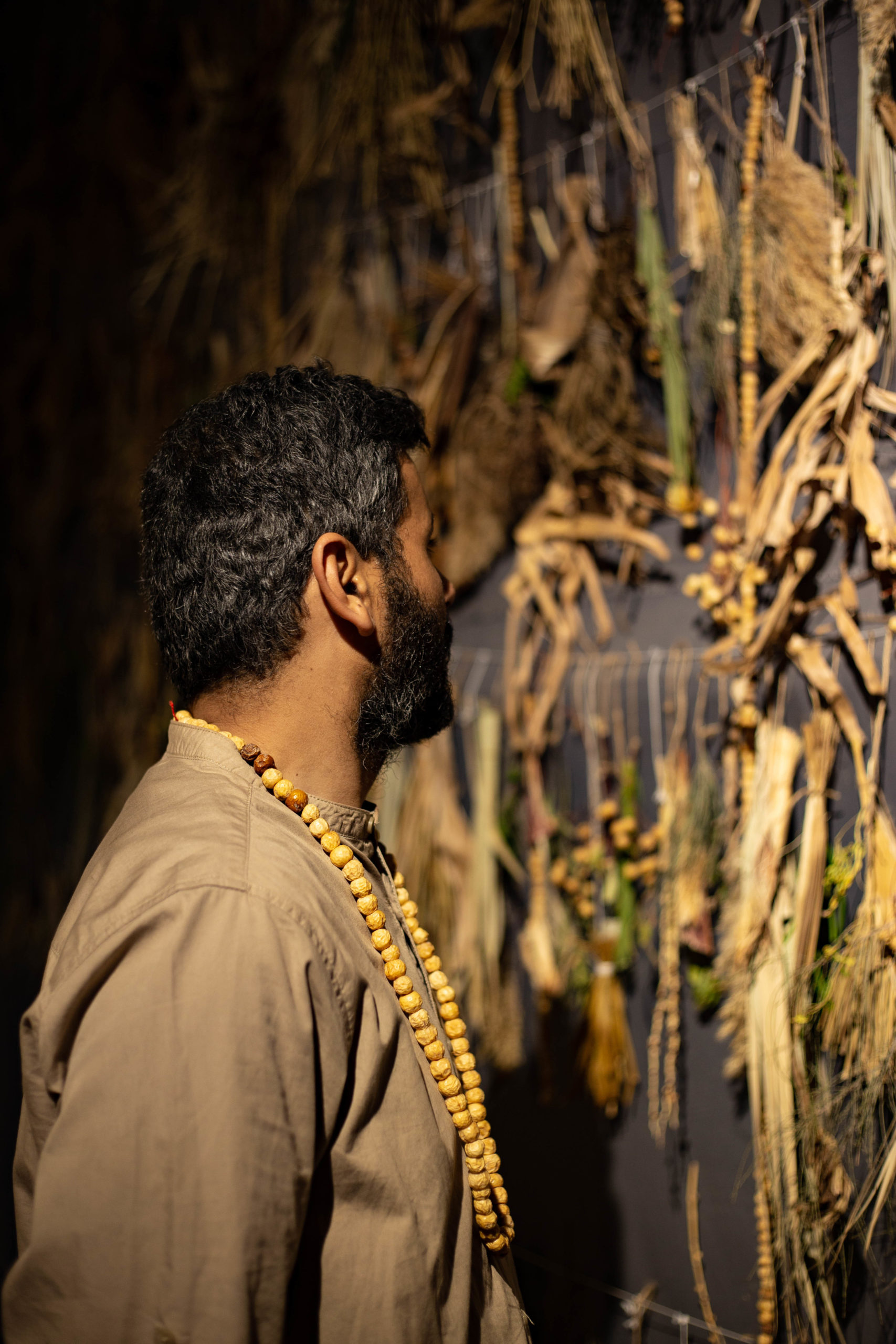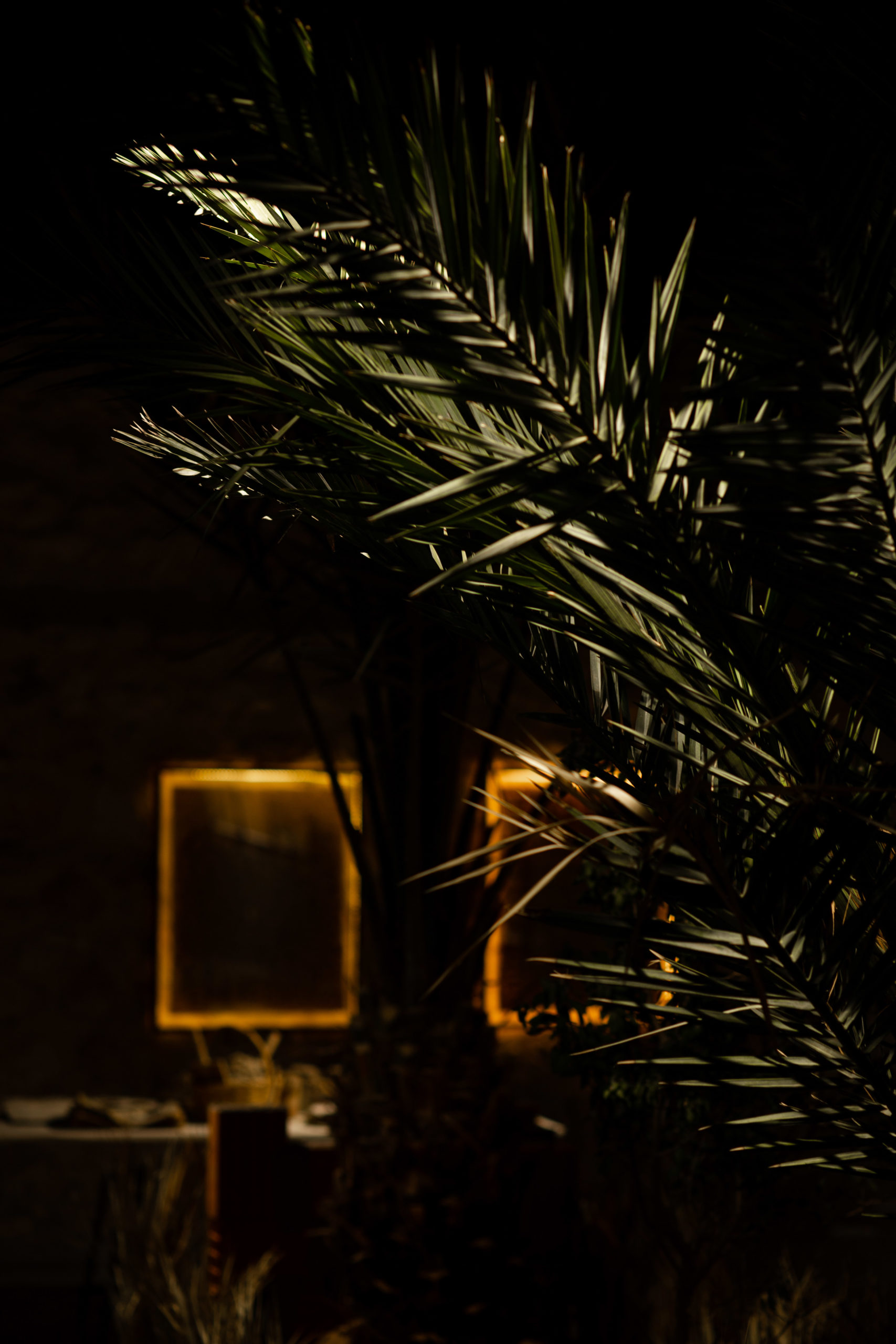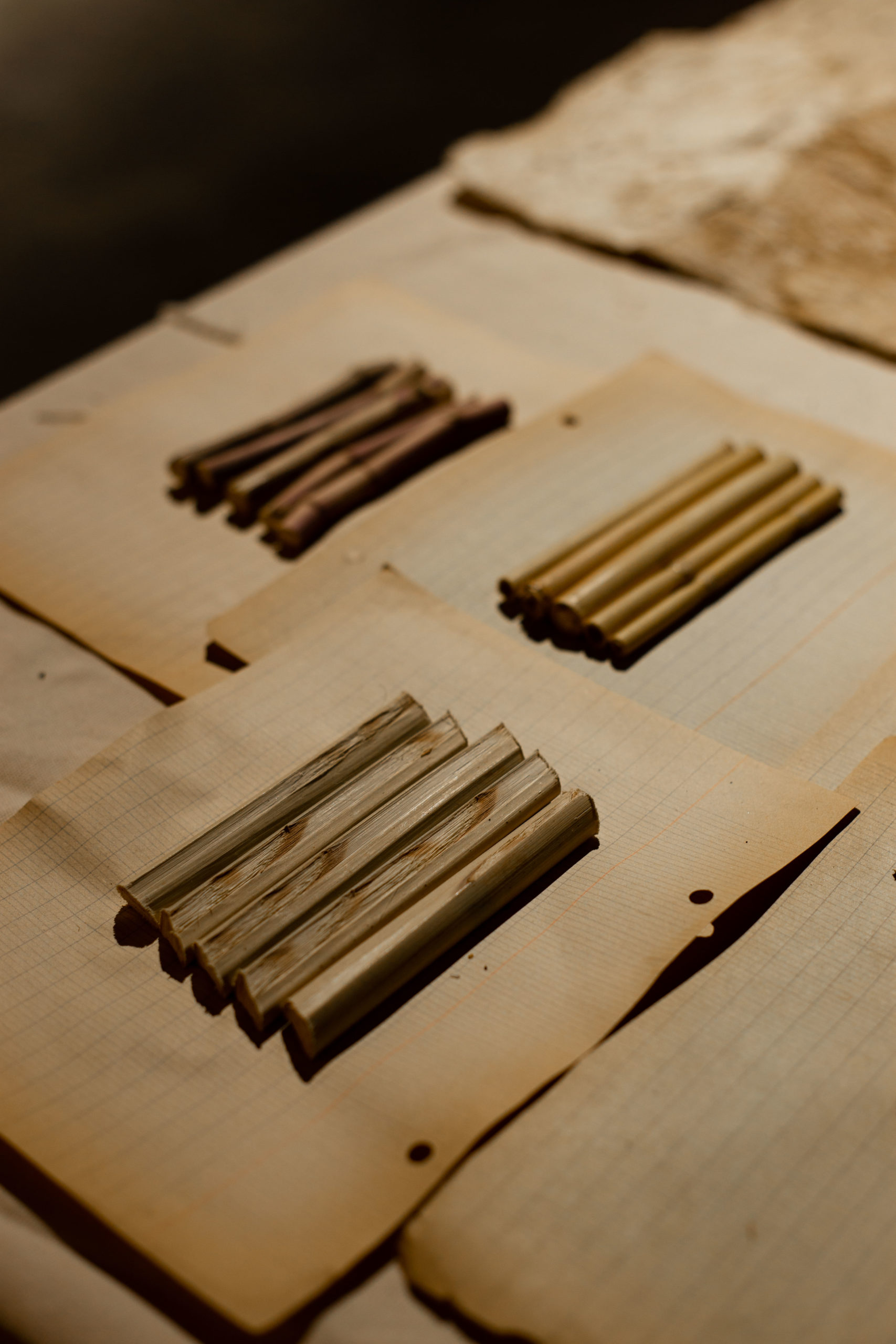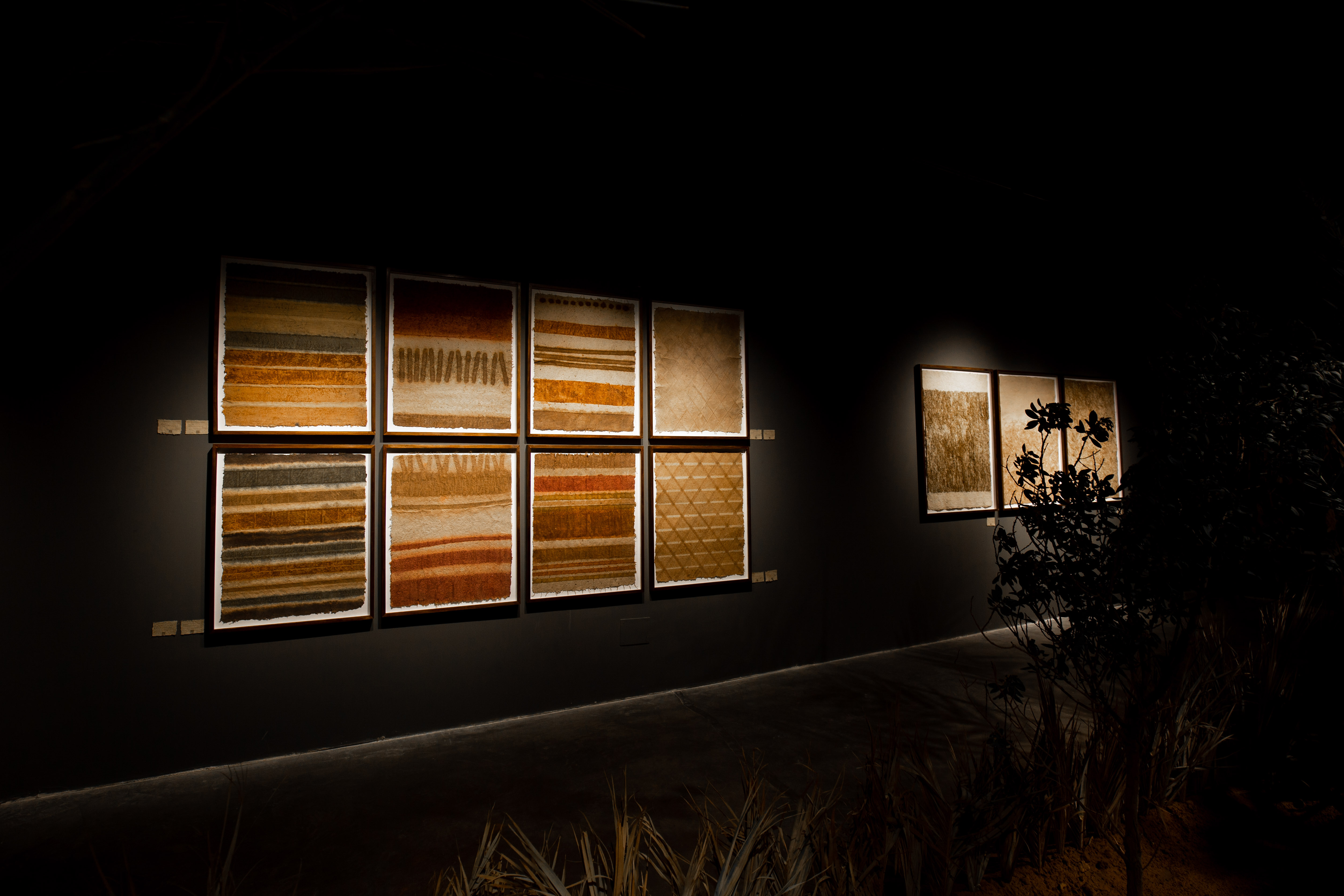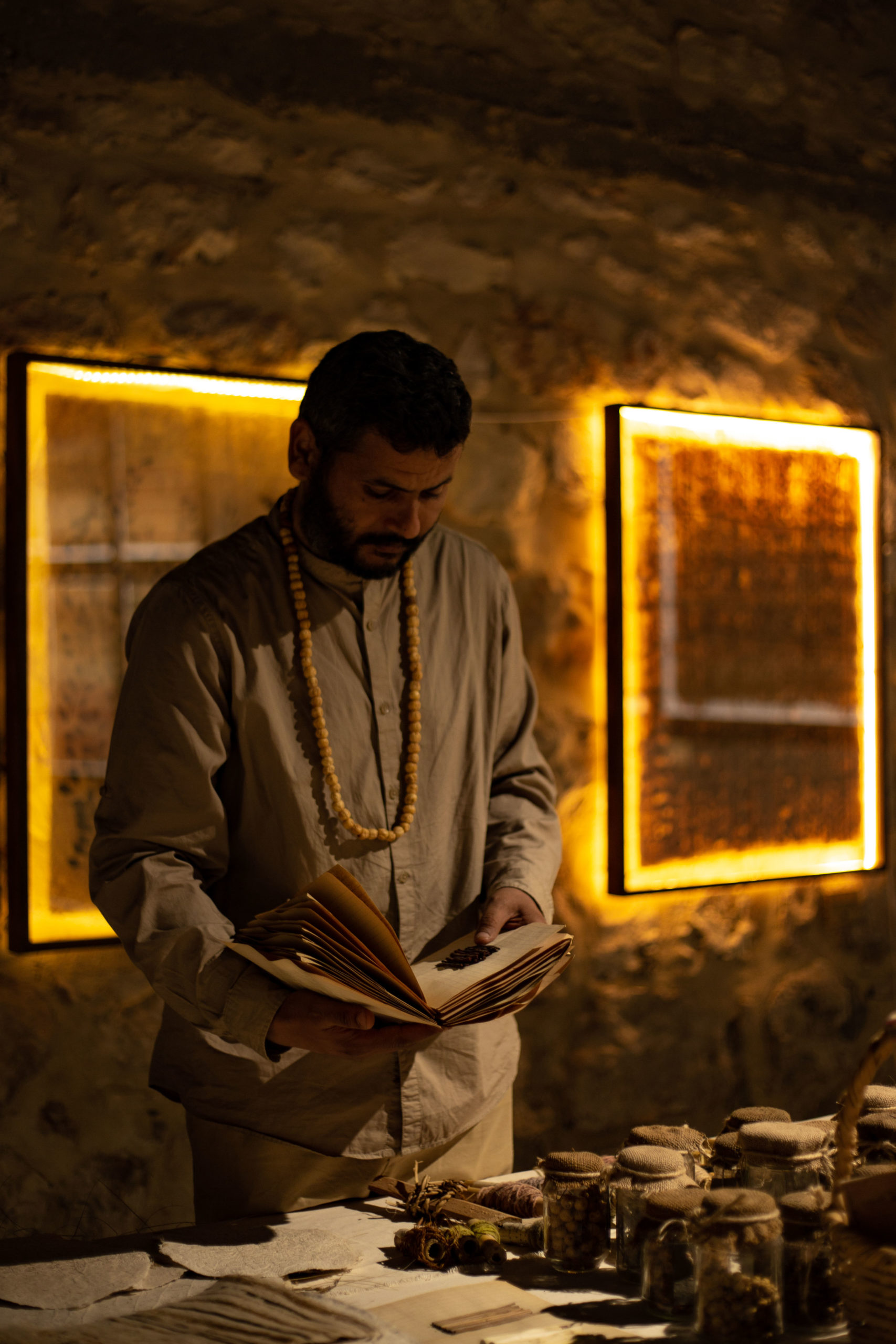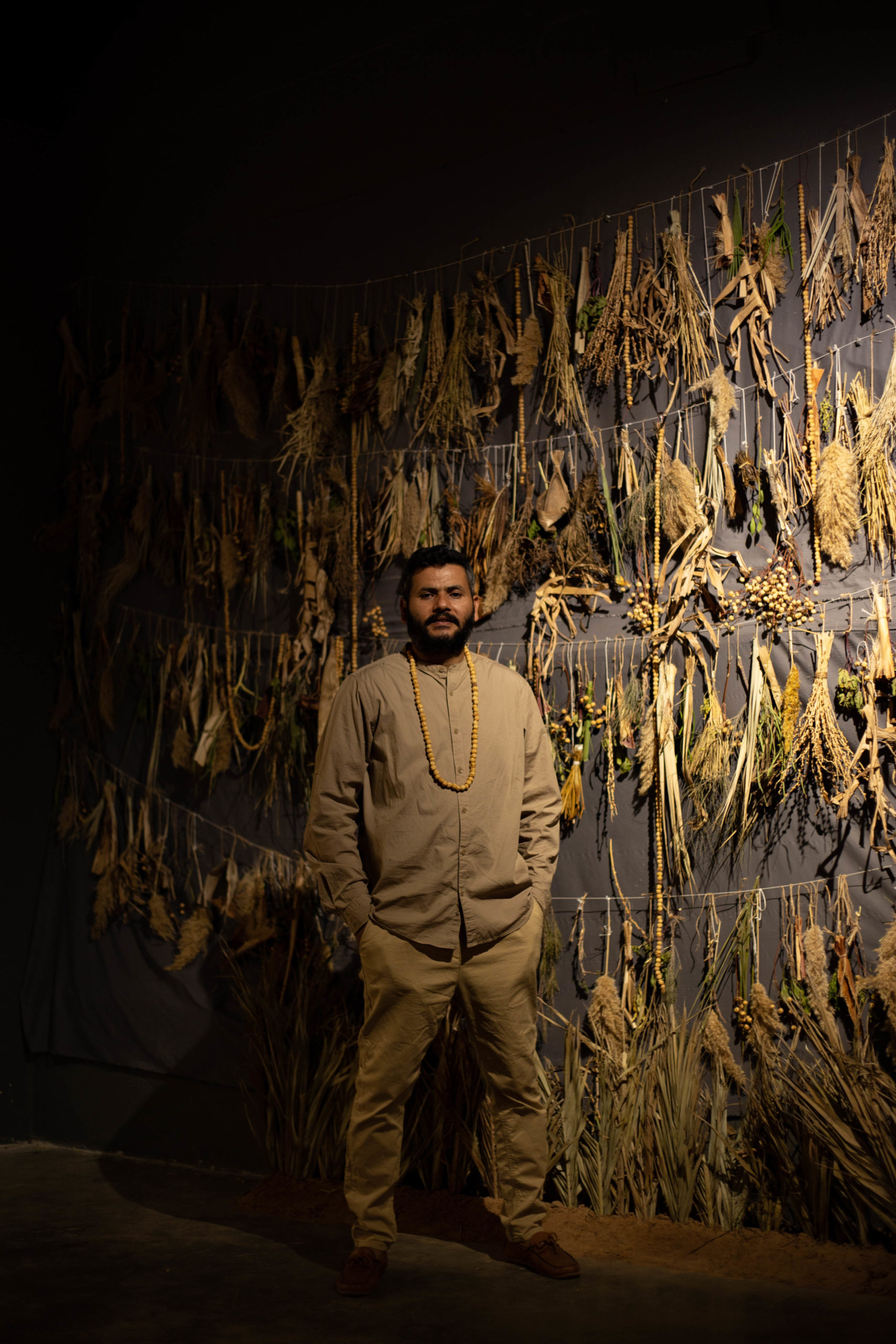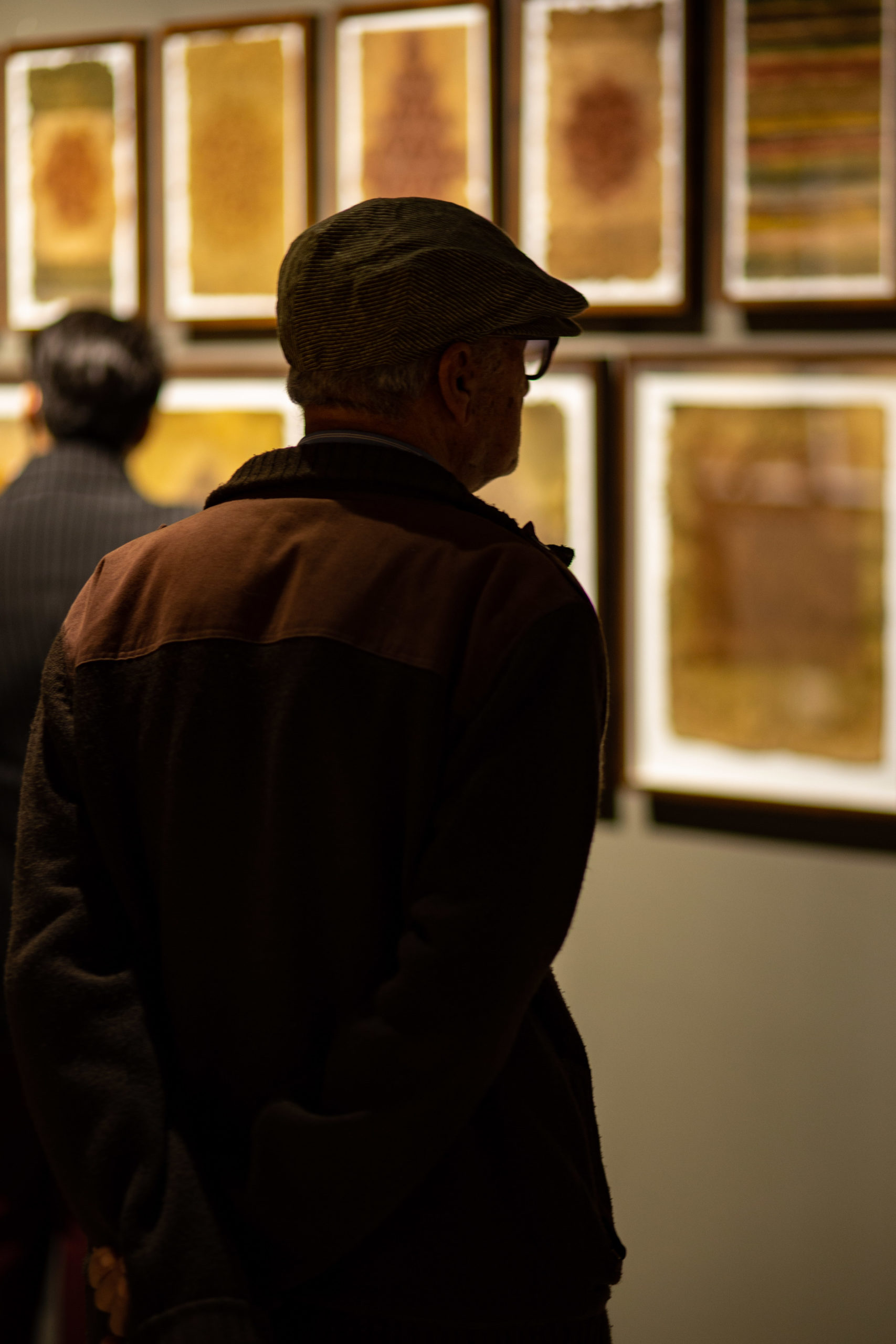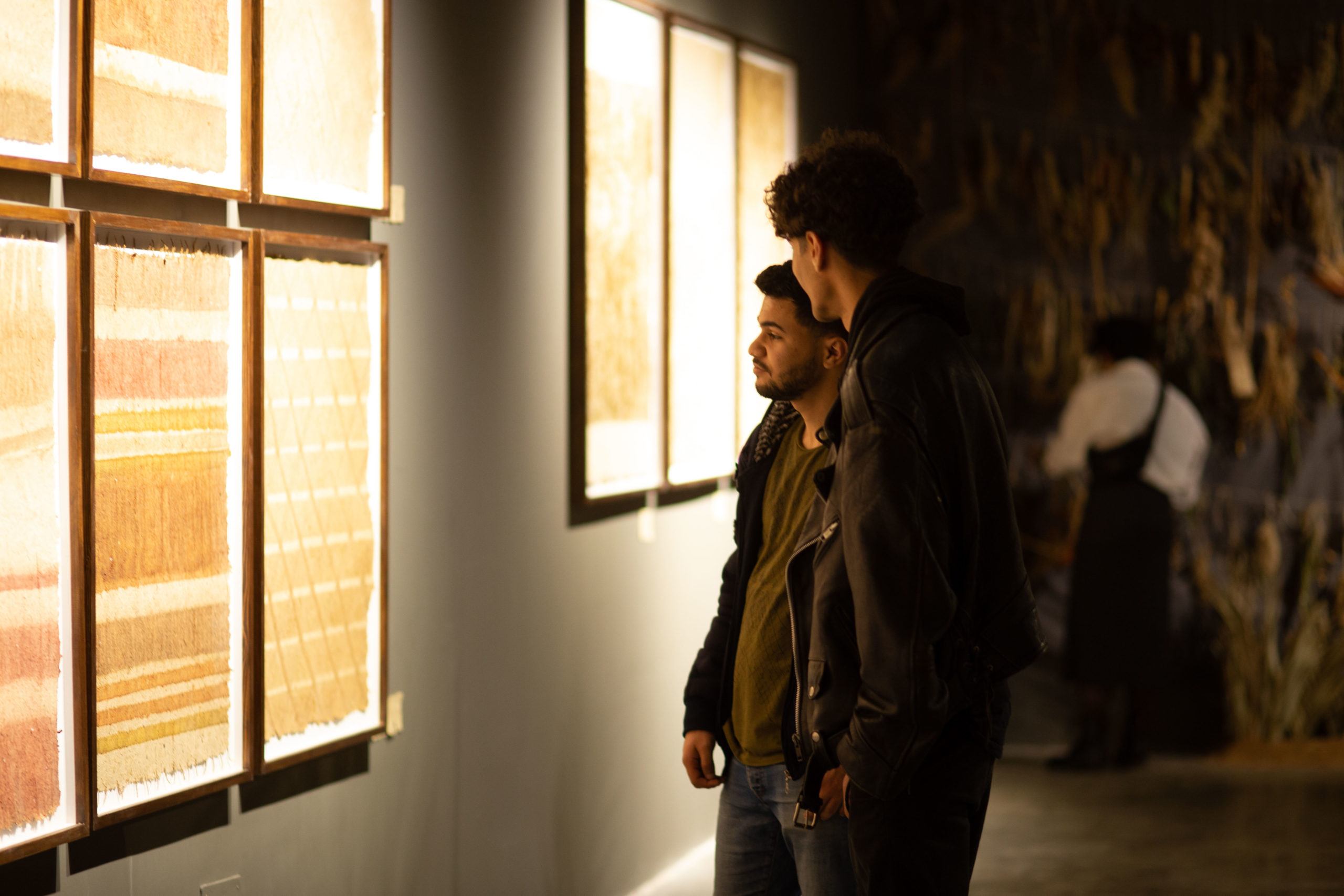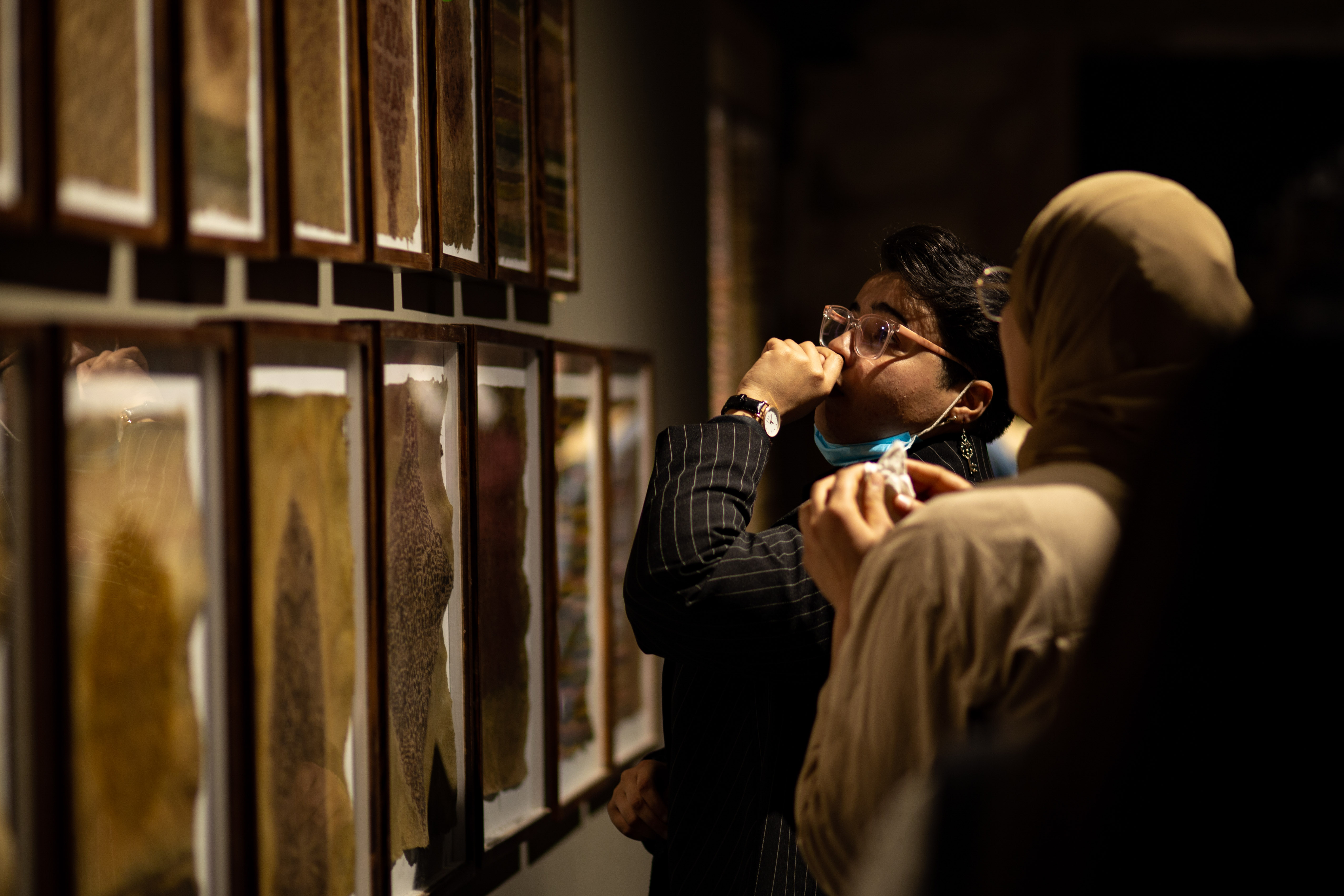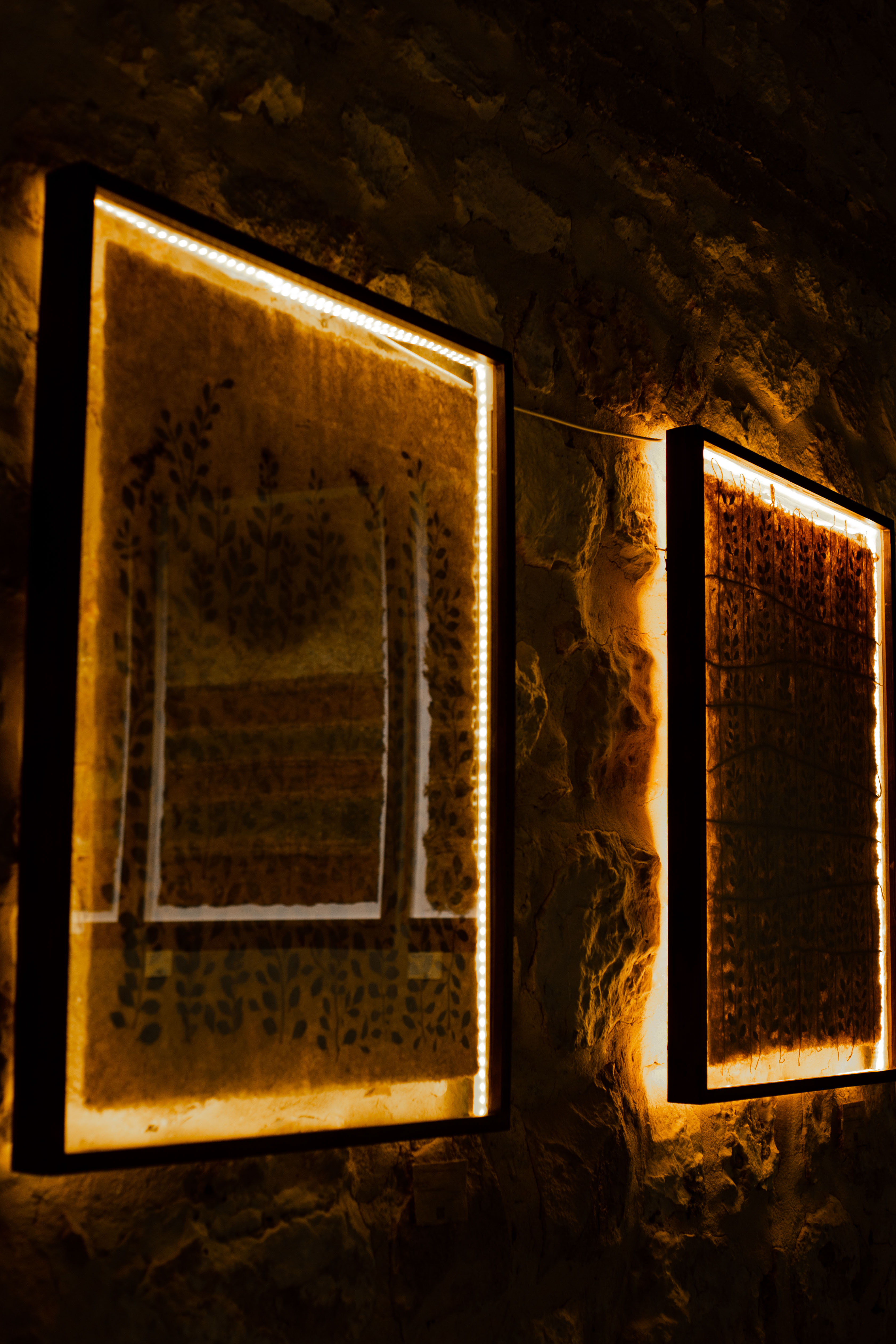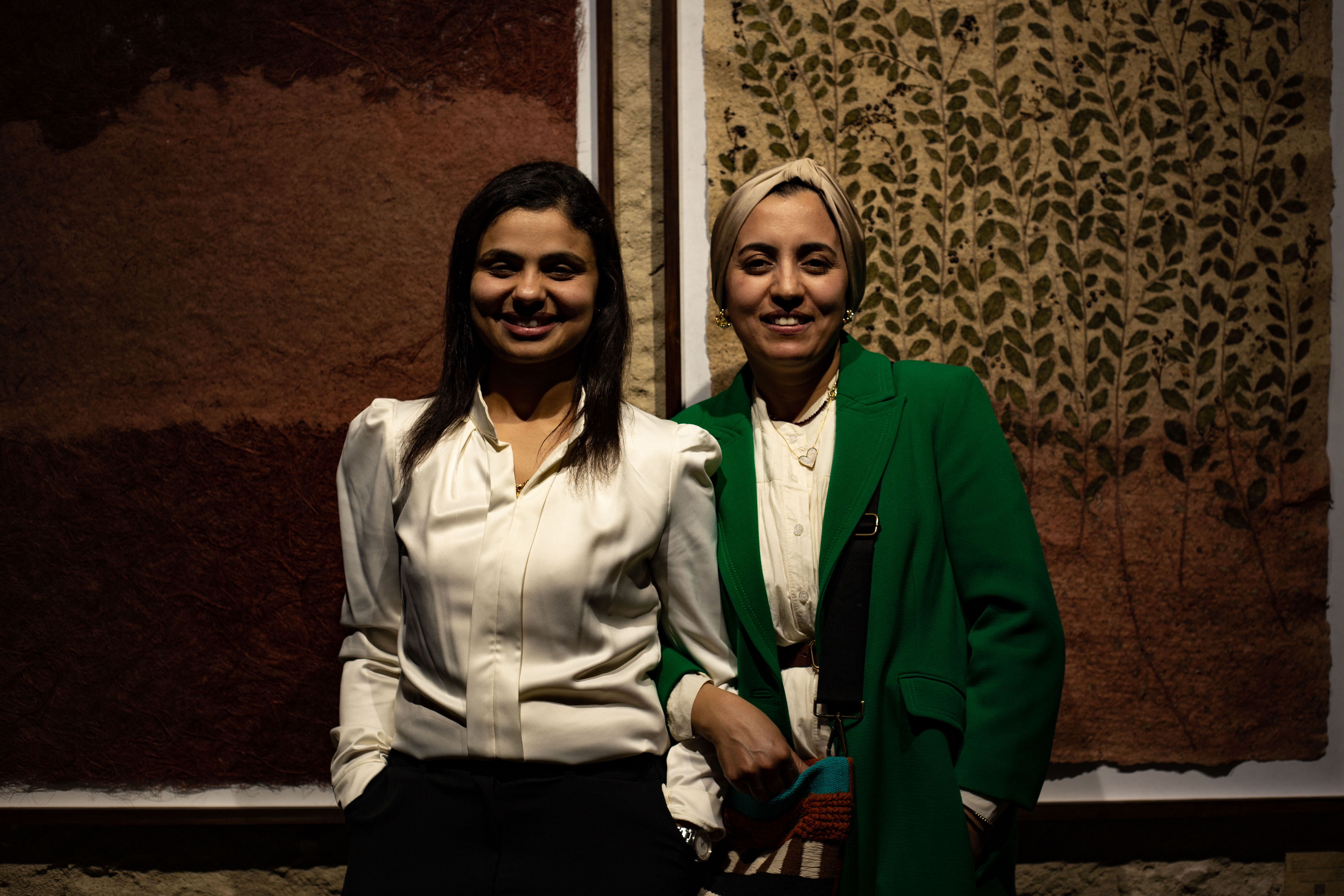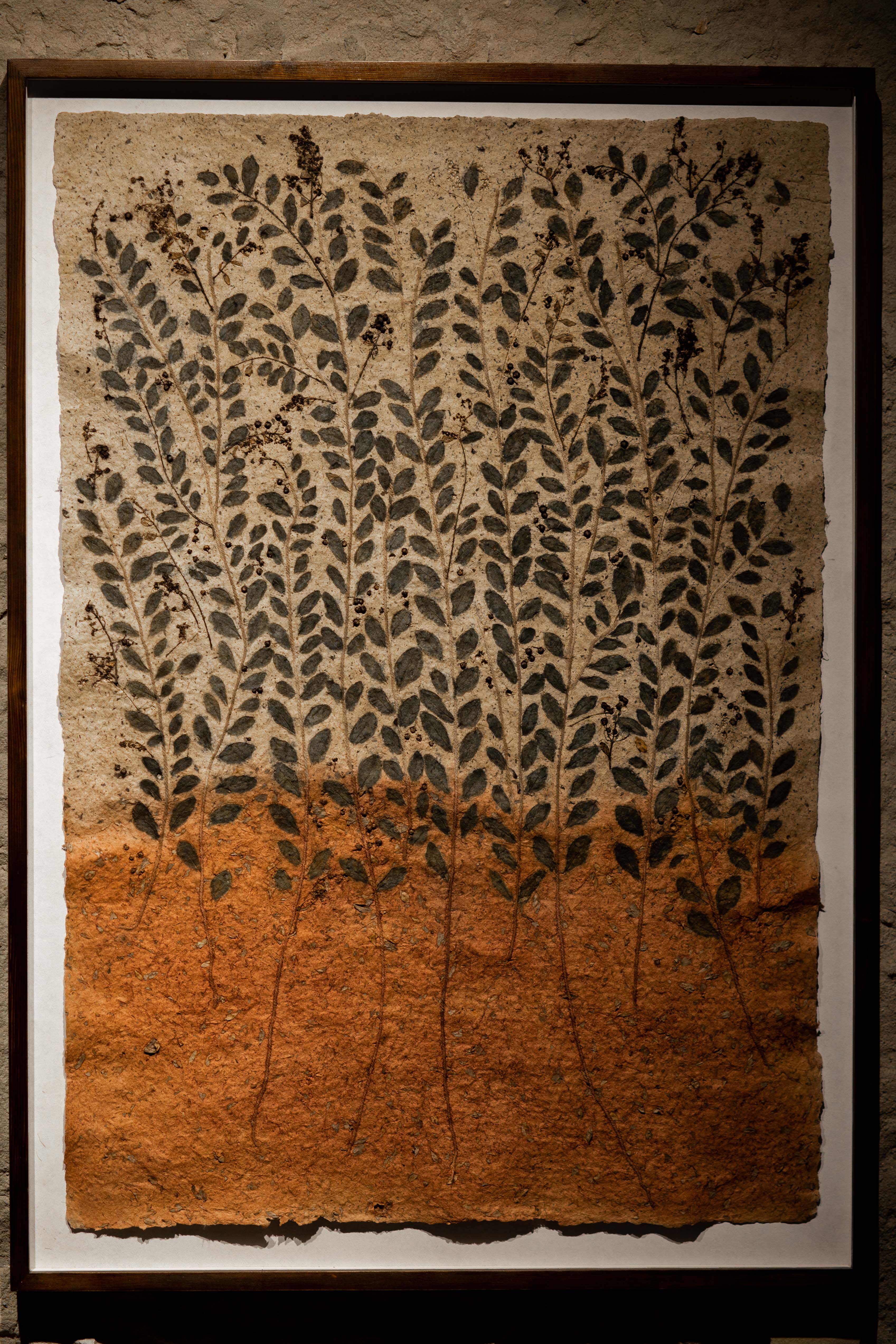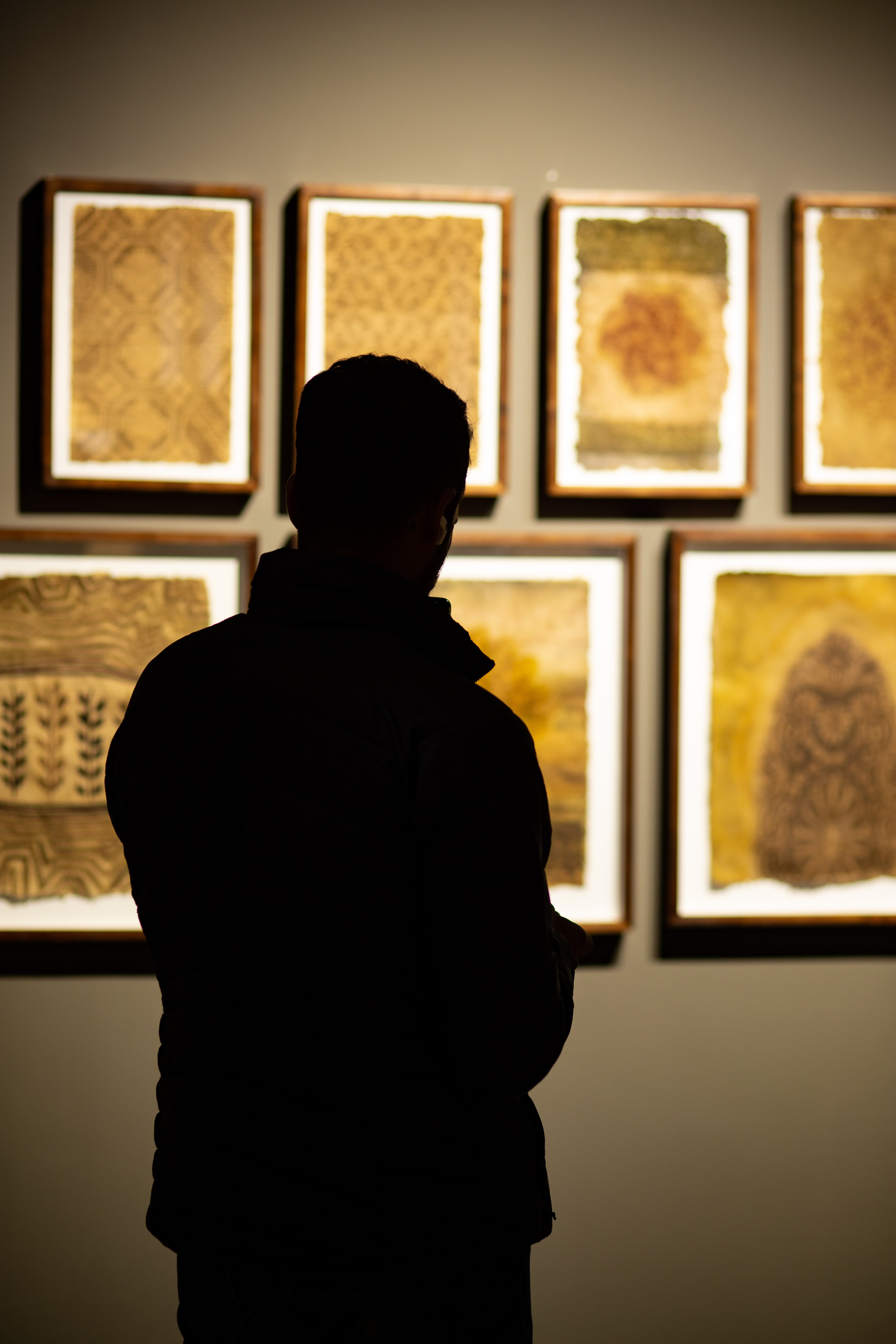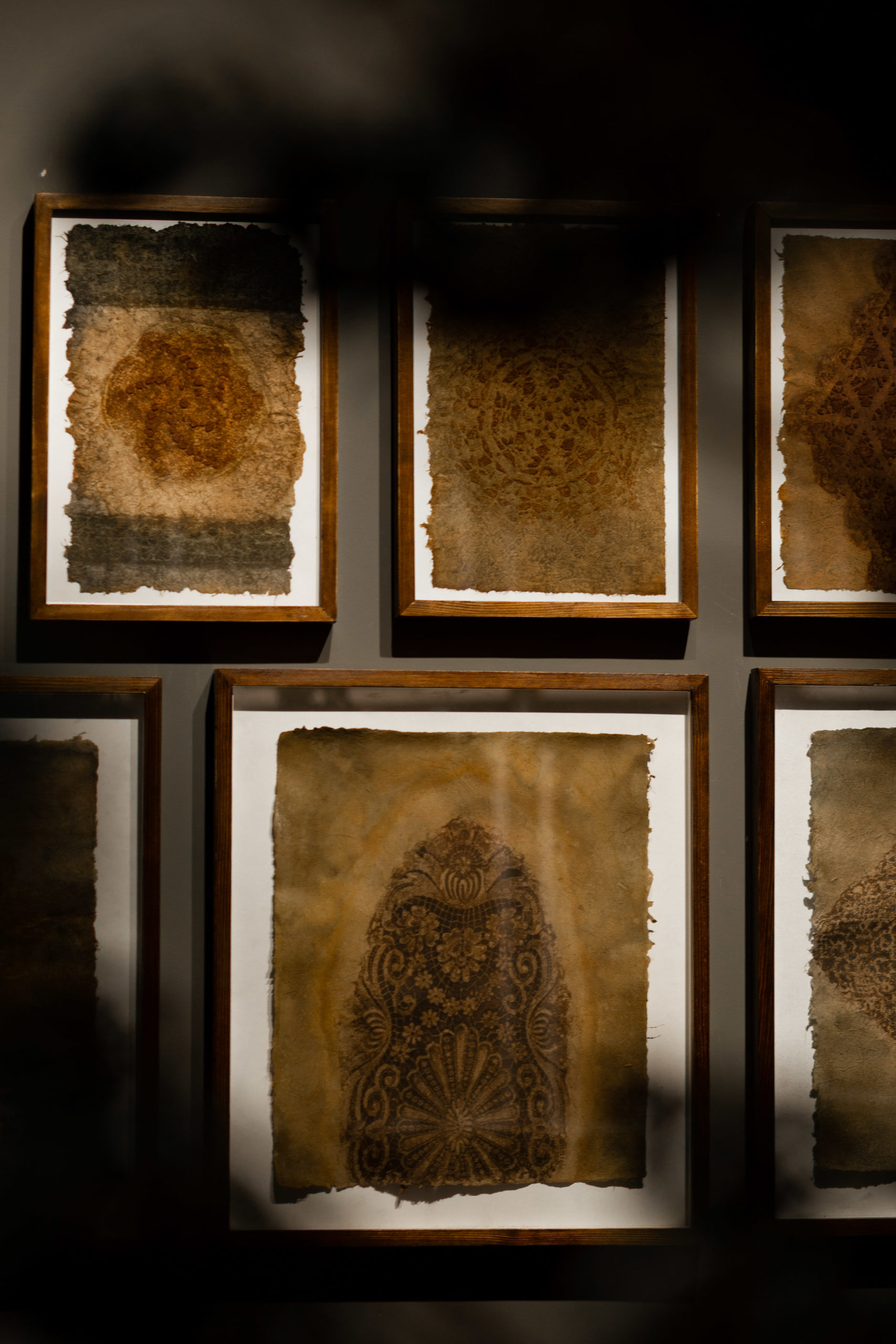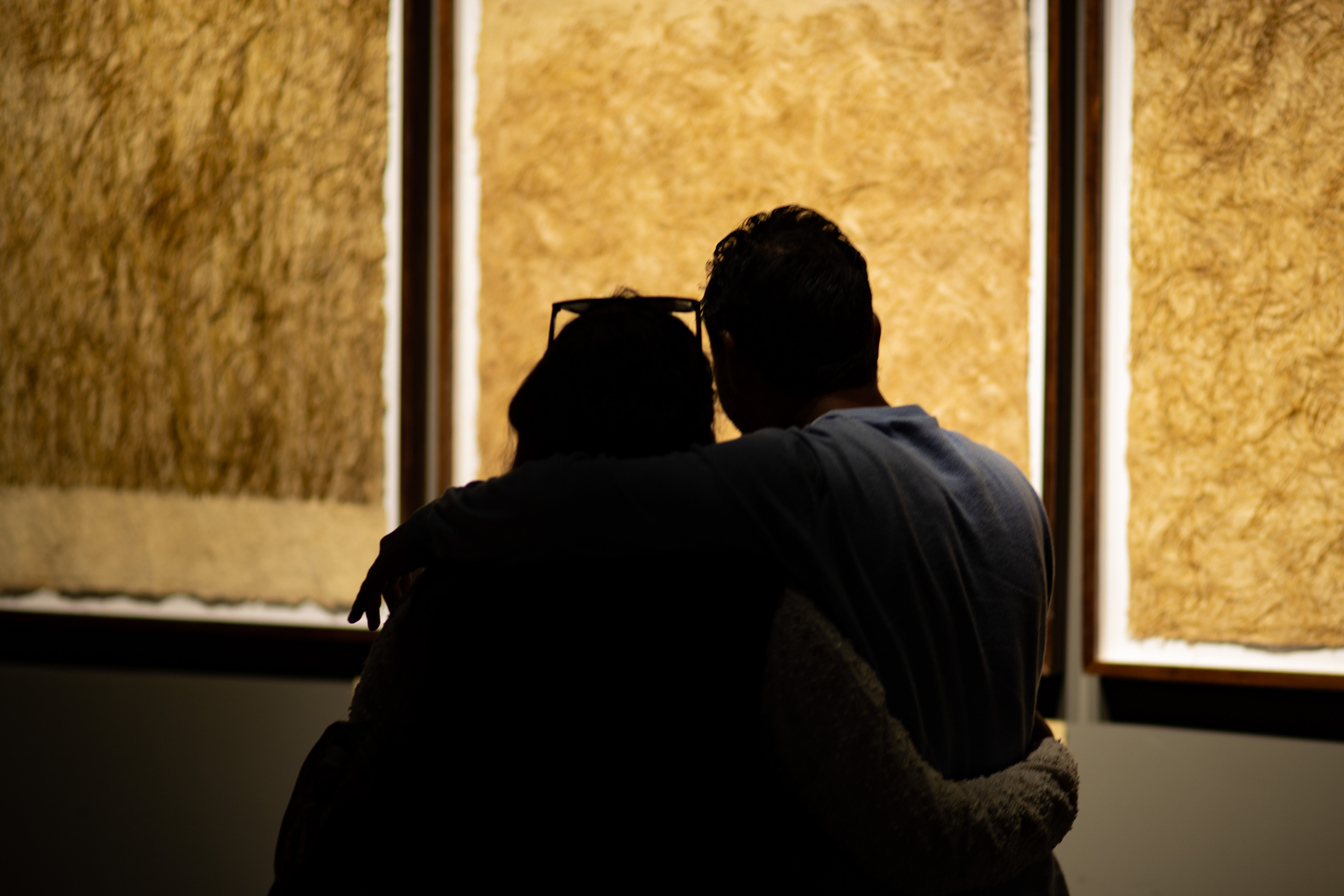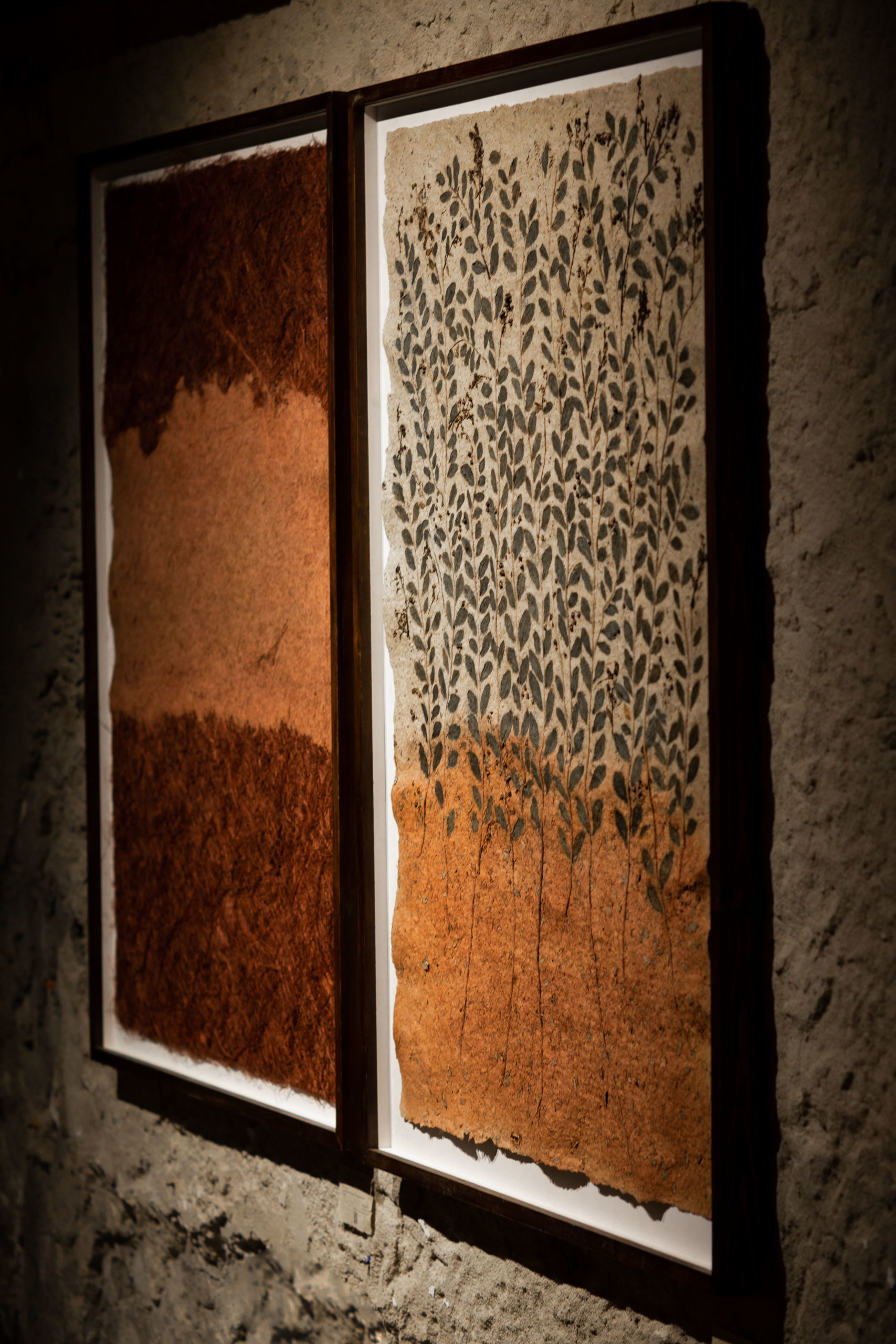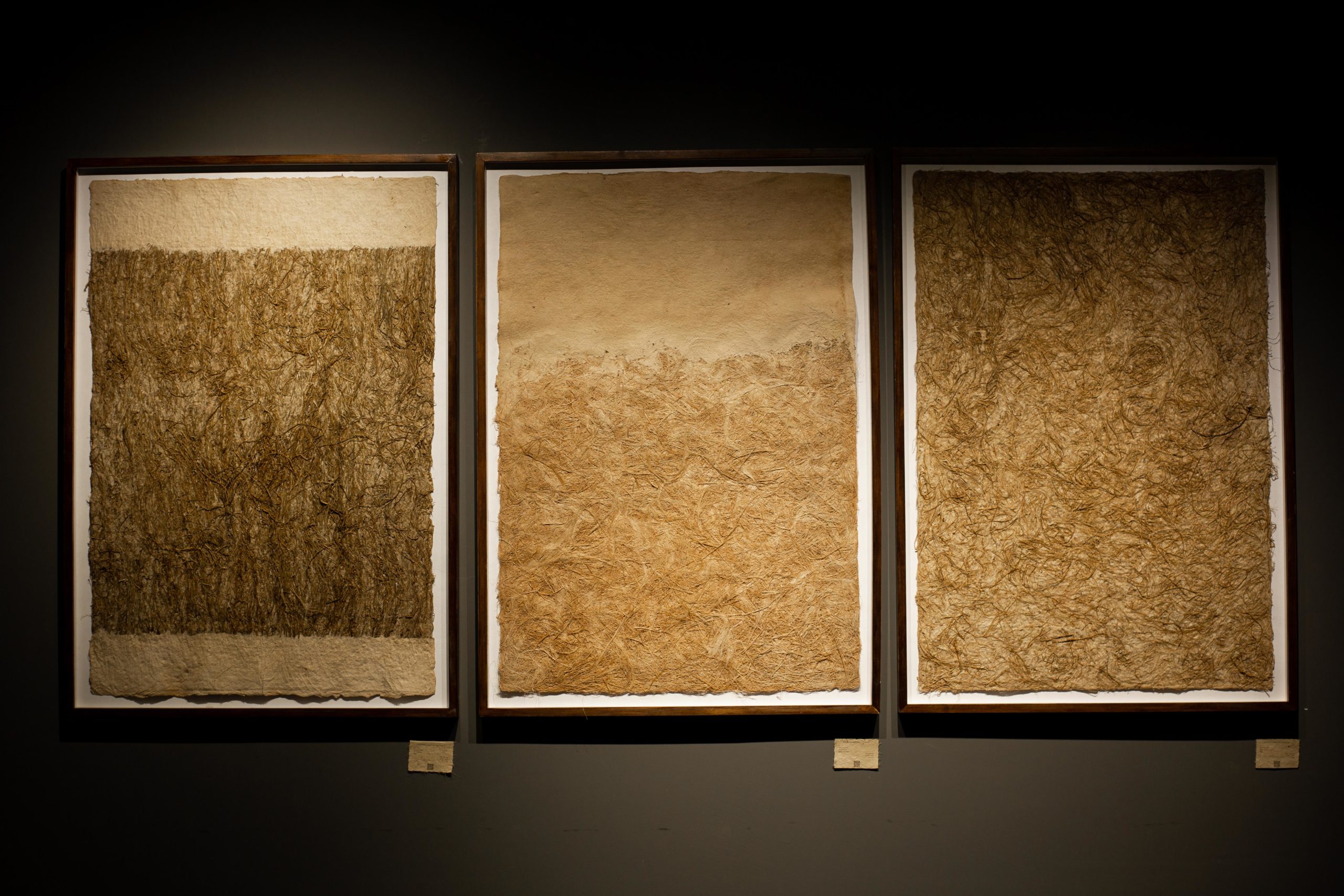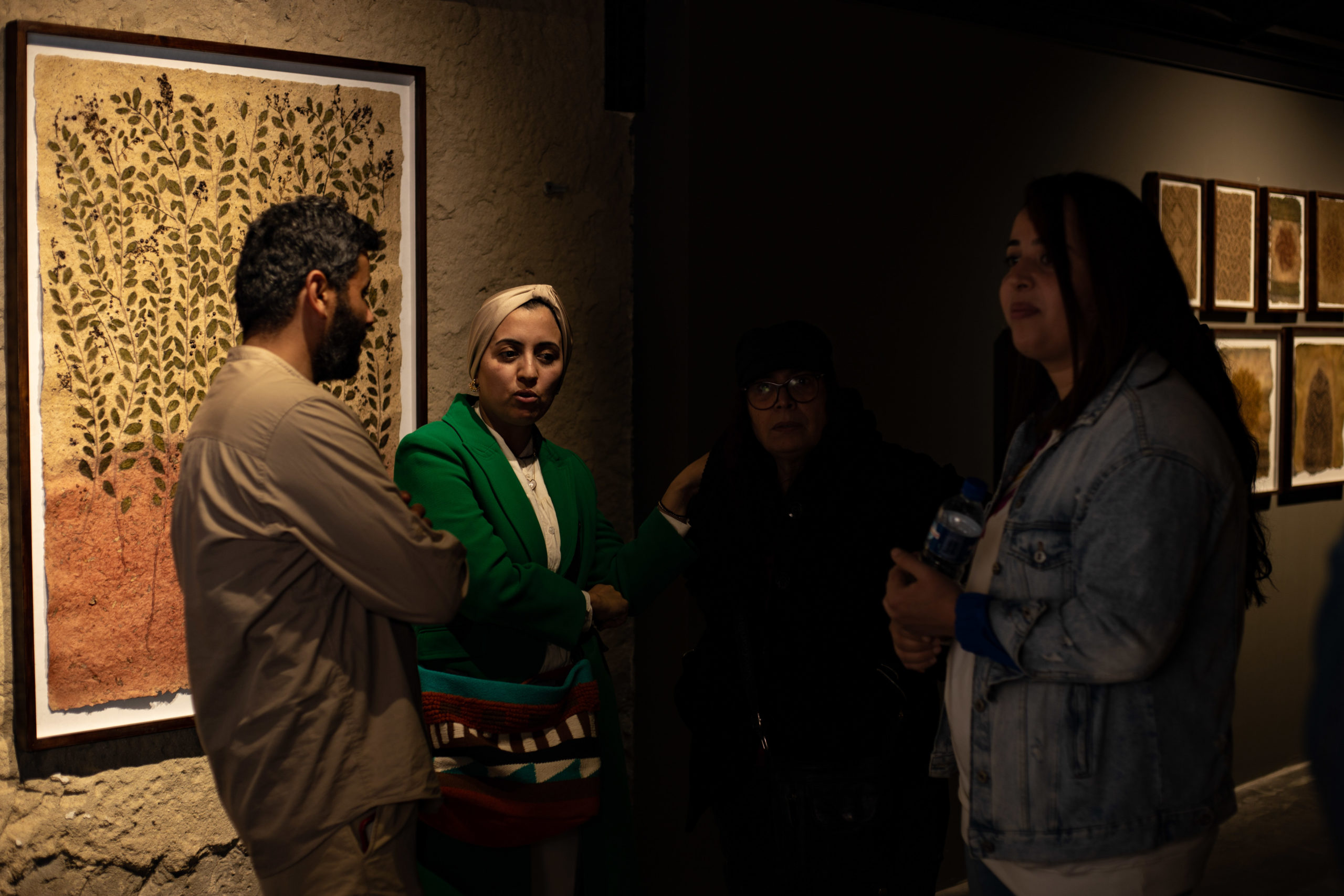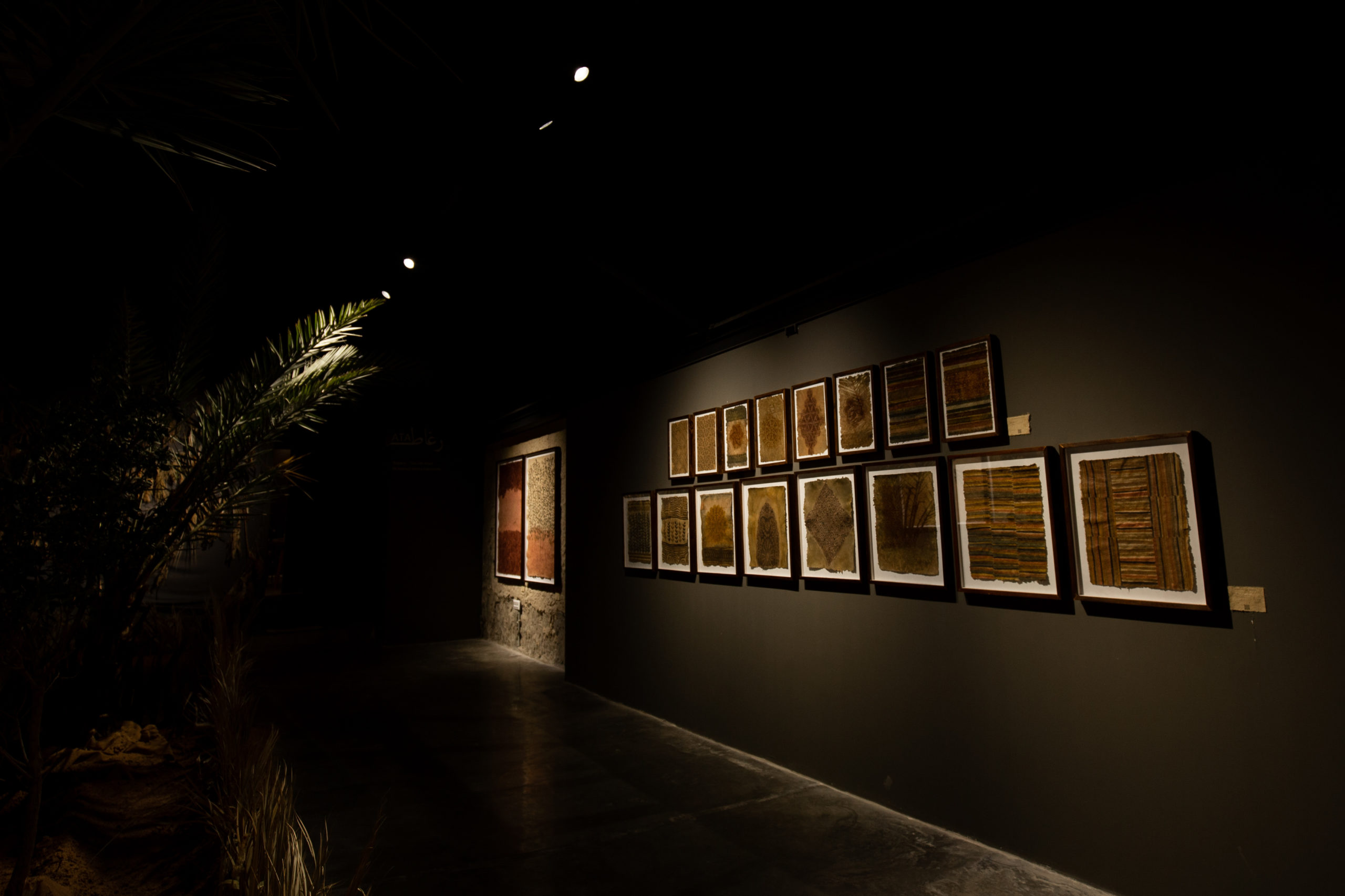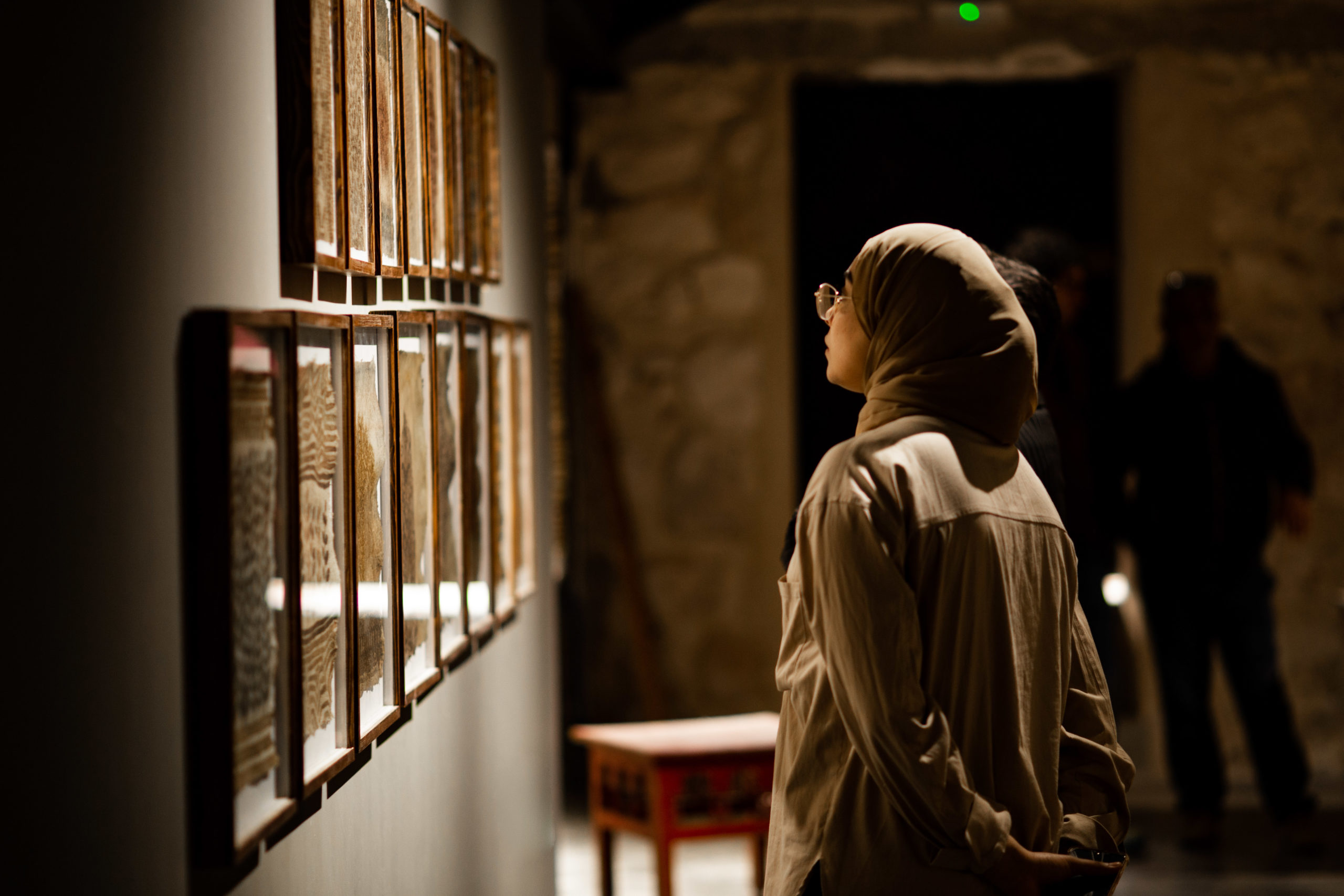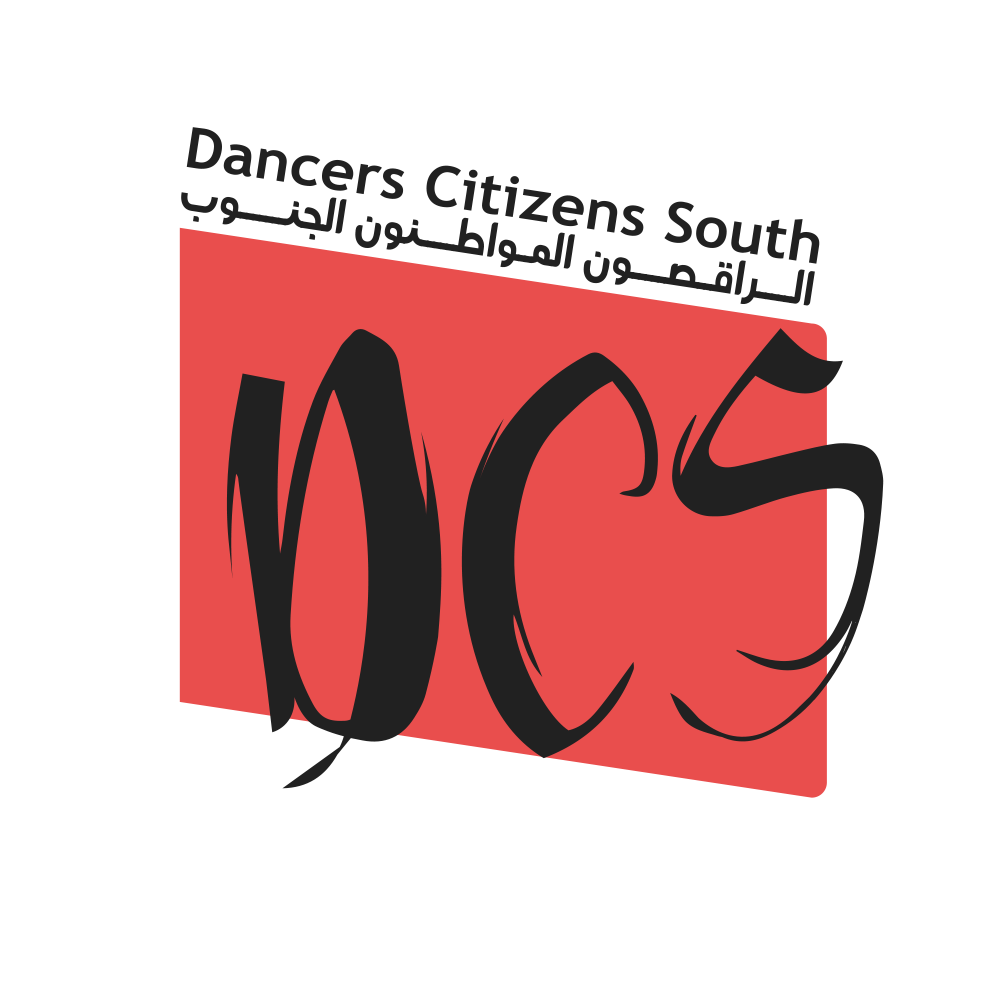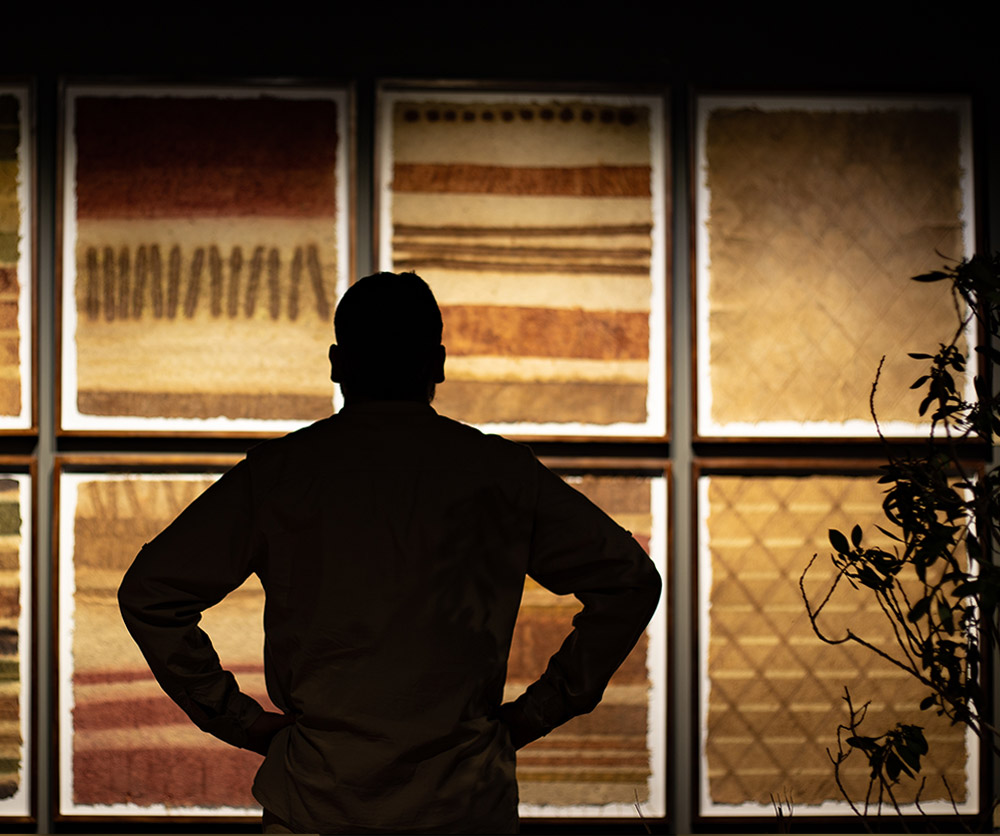
RAGHATA…La Route de la Soie رغاطة…الطريق الى الحرير
« Raghata…La Route de la Soie »
Exposition by Mohamed Amine HAMOUDA.![]() 18-03-2023 > 06-05-2023
18-03-2023 > 06-05-2023![]() No Name – artistic studio lab, Gabes (TN)Curatrice: Cyrine GherissiExposition financée par L’Art Rue, Tfanen – Tunisie Créative et soutenue par Danseurs Citoyens Sud.Les assistants : Kays Lachheb,Chayma LassØued et Chokri Amaira
No Name – artistic studio lab, Gabes (TN)Curatrice: Cyrine GherissiExposition financée par L’Art Rue, Tfanen – Tunisie Créative et soutenue par Danseurs Citoyens Sud.Les assistants : Kays Lachheb,Chayma LassØued et Chokri Amaira
رغاطة… الطريق الى الحريرعرفت ڤابس تاريخياً باسم جنة الدنيا وثاني أكبر عاصمة لإفريقية لموقعها الجغرافي بكونها واحة ساحلية متوسطية مزدهرة التجارة وتبادل السلع بين الاقاليم ، يرتكز مجدها القديم على الغطاء النباتي المتنوع لخصوصية تربتها وكثرة مياهها وطبيعة مناخها الساحلي، ذاع صيت منتوجاتها البحرية والواحية من اسماك وبقول وثمار وصنائع تقليدية كالحرير والسعف والسكر والتمور ، يحاول معرض رغاطة… الطريق الى الحرير الوقوف على مابقي من هذا الثراء امام التهديدات والارهاب الصناعي والعشوائي المحيط بواحات ڤابس يوميا ويدعو الى اعادة التفكير والتامل فيهعلى طول طريق الاكتشاف والتجريب والاختبار ، التي اجتازتها محطات جمع النباتات ، قطع الألياف ، تنعيم اللب و التجفيف الشمسي باستخدام المواد التقليدية والممارسات والتقنيات القديمة للمنطقة ، يبحث محمد أمين حمودة في مختلف النباتات المحلية والمقدمة المزروعة في قابس مثل الحناء والملوخية والموز والنخيل بانواعه والحلفاء والخروع ، إلخ .. من خلال الرحلة في بساتين الواحات بحثًا عن الاكتشافات دون كلل ، يكتشف محمد أمين حمودة باستمرار إمكانيات مختلفة و جديدة في كل تجربة ليخلق و يكشف عن وسائط ومواد جديدة من الألوان والألياف والورق والنسيج التي تجسد الفرص والإمكانيات المختلفة لنباتات قابس ليكون ذلك نوعا اخر من انواع النضال الحقيقي لواحات جهته.
Ragata… The Silk RoadHistorically, Gabes was known as the paradise of the world and the second largest capital of Ifriquia due to its geographical location as a coastal oasis in the Mediterranean, thriving in trade and exchange of goods between regions, its ancient glory was based on the diverse vegetation cover as a result of the peculiarity of its soil, the abundance of its waters, and the nature of its coastal climate. To valorize the vegetation diversity in Gabes, the exhibition Ragata… The Silk Road tries to stand on what is left of this richness in the face of industrial and environmental threats and challenges surrounding the Oasis of Gabes and calls for rethinking and contemplating it.Along the path of exploration, experimentation, and testing, traversed by plant collection stations, fiber cutting, pulp softening, and solar drying using traditional materials and ancient practices and techniques of the region, Mohamed Amine Hammouda investigates the various native and introduced plants cultivated in Gabes such as henna, mallow, bananas, date palms different types, allies, and castor, etc… Through the journey in the orchards of the Oasis in search of discoveries, Mohamed Amine Hammouda constantly discovers different and new possibilities in each experiment to create and reveal new media and materials such as colors, fibers, paper, and textiles that embody the different opportunities and possibilities of the plants of Gabes, and to manifest as a new type of struggle for the Oasis.

